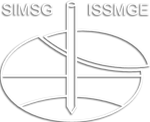Concept for sustainable lab and in-situ research on earthquake induced geohazards
Concept for sustainable lab and in-situ research on earthquake induced geohazards
Geohazards related to earthquakes, such as amplification effects, liquefaction, soil-structure interaction etc. are complex phenomena which need to be investigated with diverse set of approaches, both experimental and in-situ. In this paper two state of the art facilities for earthquake geotechnical research are presented, established in the Laboratory for soil dynamics and foundation engineering in IZIIS, Skopje, Macedonia. At first, in laboratory conditions, experimental setup consisted of original laminar container and detailed soil material characterization – Skopje sand is presented along with obtained results from series of element and shaking table tests. Second, an in situ geotechnical laboratory was established in urban part of Ohrid, N. Macedonia at the site of a nine-story building with two accelerometers installed on the building, 4 instruments installed at the foundation level as well as one surface and three downhole accelerometers 125 meters down the bedrock. With recent activities, real time recording, and health monitoring processes are enabled at the location. The large set of in-situ investigation, characterization of the geotechnical profile and enabled real–time earthquake recordings are valid data for detailed studies of amplification of site effects, liquefaction and SSI at the site. In the paper overall comments on obtained results from both facilities is obtained, with aspects for future application, correlation, and obstacles. Both resources, experimental and in-situ represent a well-proven example of a facility for continuous and sustainable research in earthquake geotechnical engineering.
Julijana Bojadjieva; Vlatko Sheshov; Kemal Edip; Toni Kitanovski; Dejan Ivanovski; I. Gjorgjeska; A. Bogdanovic
18th European Conference on Soil Mechanics and Geotechnical Engineering (ECSMGE2024)
B - Geohazards
